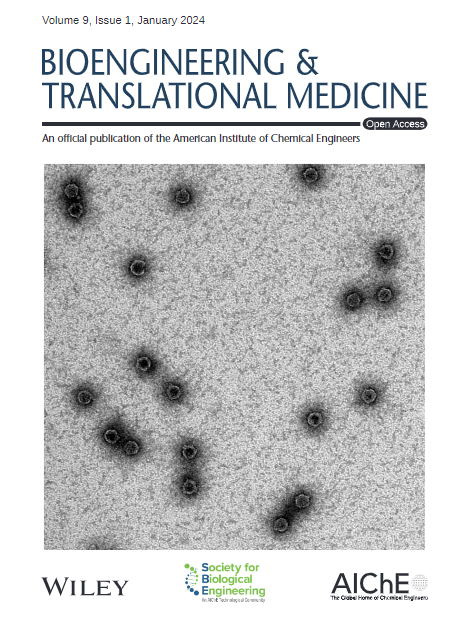In vivo immunogenicity assessment of a multiepitope‐displayed phage vaccine against Brucella species infection in BALB/c mice
IF 5.7
2区 医学
Q1 ENGINEERING, BIOMEDICAL
引用次数: 0
Abstract
Bacteriophages are considered ideal vaccine platforms owing to their safety, intrinsic adjuvant properties, stability, and low‐cost production. One of the best strategies to prevent brucellosis in humans and animals is vaccination. For several years, researchers have dedicated their efforts to enhance the effectiveness and safety of the Brucella vaccine. This study was designed to evaluate the immunogenicity of a phage vaccine displaying multiepitopes from six different Brucella protective proteins in a mouse model. This study used immunoinformatics to predict T‐ and B‐cell epitopes. Subsequently, a multiepitope protein was synthesized and recombinant phages displaying the multiepitope protein were prepared. The multiepitope protein display on the phage was confirmed by Western blot analysis. Six groups of BALB/c mice (6 mice per group) received multiepitope phage (as a vaccine), helper phage, and PBS as controls subcutaneously or orally. An ELISA assay was used to analyze the humoral response in mouse serum, while an interferon‐gamma ELISpot assay was performed on mouse splenocytes to evaluate the cell‐mediated immune response. Mice immunized with multiepitope phage showed significant serum levels of specific IgG and significant numbers of specific IFN‐producing T cells in splenic lymphocytes (BALB/c小鼠抗布鲁氏菌感染的多表位噬菌体疫苗的体内免疫原性评估
由于其安全性、固有的佐剂特性、稳定性和低成本生产,噬菌体被认为是理想的疫苗平台。预防人类和动物感染布鲁氏菌病的最佳策略之一是接种疫苗。几年来,研究人员一直致力于提高布鲁氏菌疫苗的有效性和安全性。本研究旨在评估在小鼠模型中显示六种不同布鲁氏菌保护蛋白多表位的噬菌体疫苗的免疫原性。本研究使用免疫信息学预测T细胞和B细胞表位。随后,合成了一个多表位蛋白,并制备了显示该多表位蛋白的重组噬菌体。Western blot分析证实了噬菌体上显示的多表位蛋白。六组BALB/c小鼠(每组6只)分别皮下或口服多表位噬菌体(作为疫苗)、辅助噬菌体和PBS作为对照。采用ELISA法分析小鼠血清中的体液反应,采用干扰素γ ELISpot法检测小鼠脾细胞以评估细胞介导的免疫反应。经多表位噬菌体免疫的小鼠血清特异性IgG水平和脾脏淋巴细胞中特异性产生IFN的T细胞数量显著增加(p值<;0.05)。口服给药途径提供了比皮下注射更强的细胞反应(约10倍),这对于对抗布鲁氏菌感染很重要。这些发现提供了第一个证据,表明多表位显示噬菌体疫苗可能是开发安全有效的布鲁氏菌疫苗的有希望的途径。
本文章由计算机程序翻译,如有差异,请以英文原文为准。
求助全文
约1分钟内获得全文
求助全文
来源期刊

Bioengineering & Translational Medicine
Pharmacology, Toxicology and Pharmaceutics-Pharmaceutical Science
CiteScore
8.40
自引率
4.10%
发文量
150
审稿时长
12 weeks
期刊介绍:
Bioengineering & Translational Medicine, an official, peer-reviewed online open-access journal of the American Institute of Chemical Engineers (AIChE) and the Society for Biological Engineering (SBE), focuses on how chemical and biological engineering approaches drive innovative technologies and solutions that impact clinical practice and commercial healthcare products.
 求助内容:
求助内容: 应助结果提醒方式:
应助结果提醒方式:


